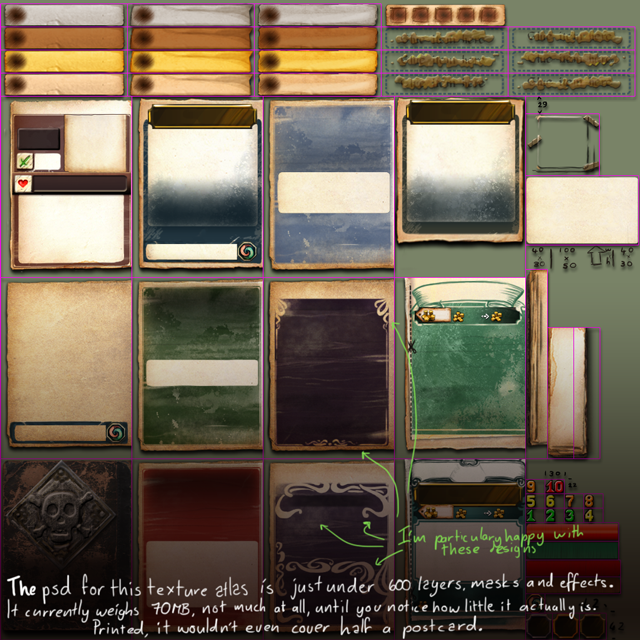
damousey
Game Art
Making things pretty. That’s all it is; which seems so straightforward. In reality, making art for video games can get complicated very quickly. Besides needing your fundamental art skillset of composition, colour, technique and all the rest of the artsy fartsy background, you need a whole additional technical understanding to deal with the pipeline of game making. Even an essentially 2D game like Desktop Dungeons, which I reckon is on the easier end of the game art spectrum as there’s more of a wysiwyg dynamic, takes some hefty technical consideration.

You need to know your tools. Know how your images are being interpreted and reproduced in the game, learn what can and can’t be procedurally reproduced in the chosen pipeline . In my experience there’s often a lot of to and fro to get a file exactly right and building non-destructive source files is critical. At any point in a game’s production a change can be called for that may be buried deep in work you produced months ago; those layers had better not be flattened together and don’t you wish you’d labelled them better now?
Another huge aspect of this production art is the need to prototype quickly, as an artist in a pipeline you need to be able to get an idea down quickly, particularly in those occasional cases when you’re only the stylus-wielding cog for someone else’s vision. Sometimes you need to explore art directions that get scrapped to find the one that works, the quicker you can scout, the better off your work.
The cutting room floor; not a good camp-site.

